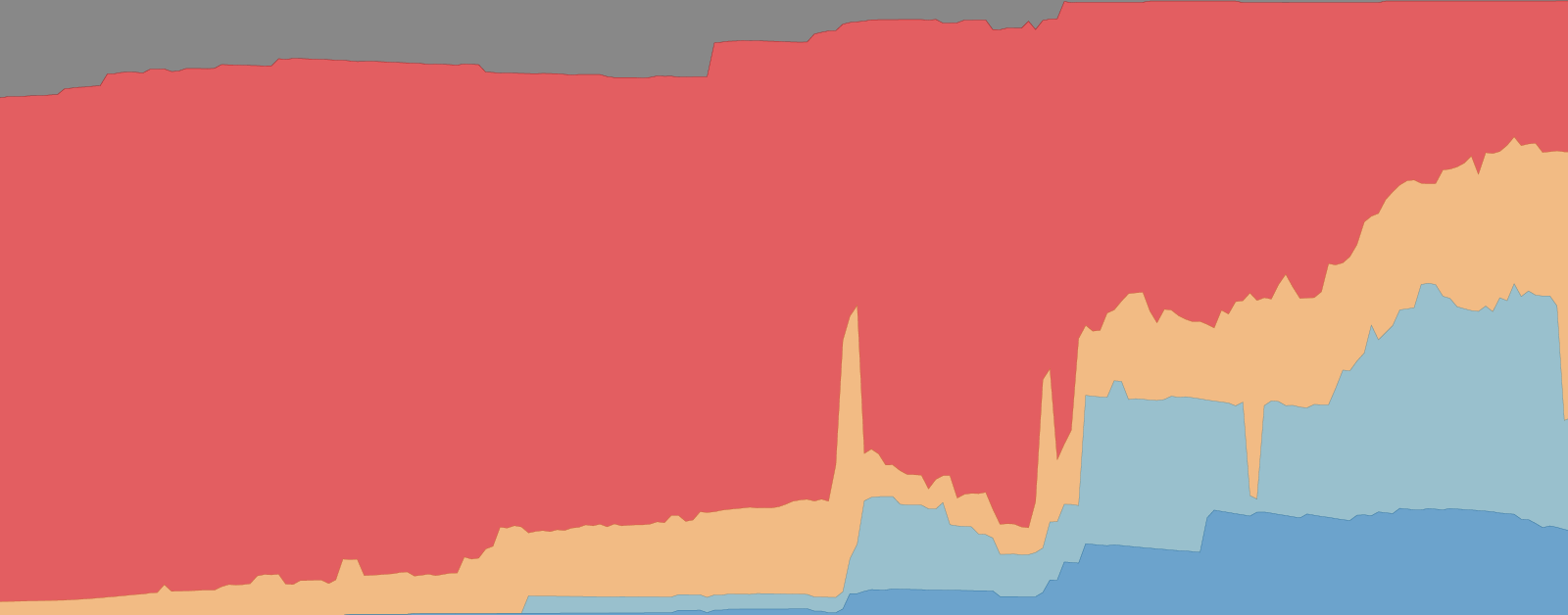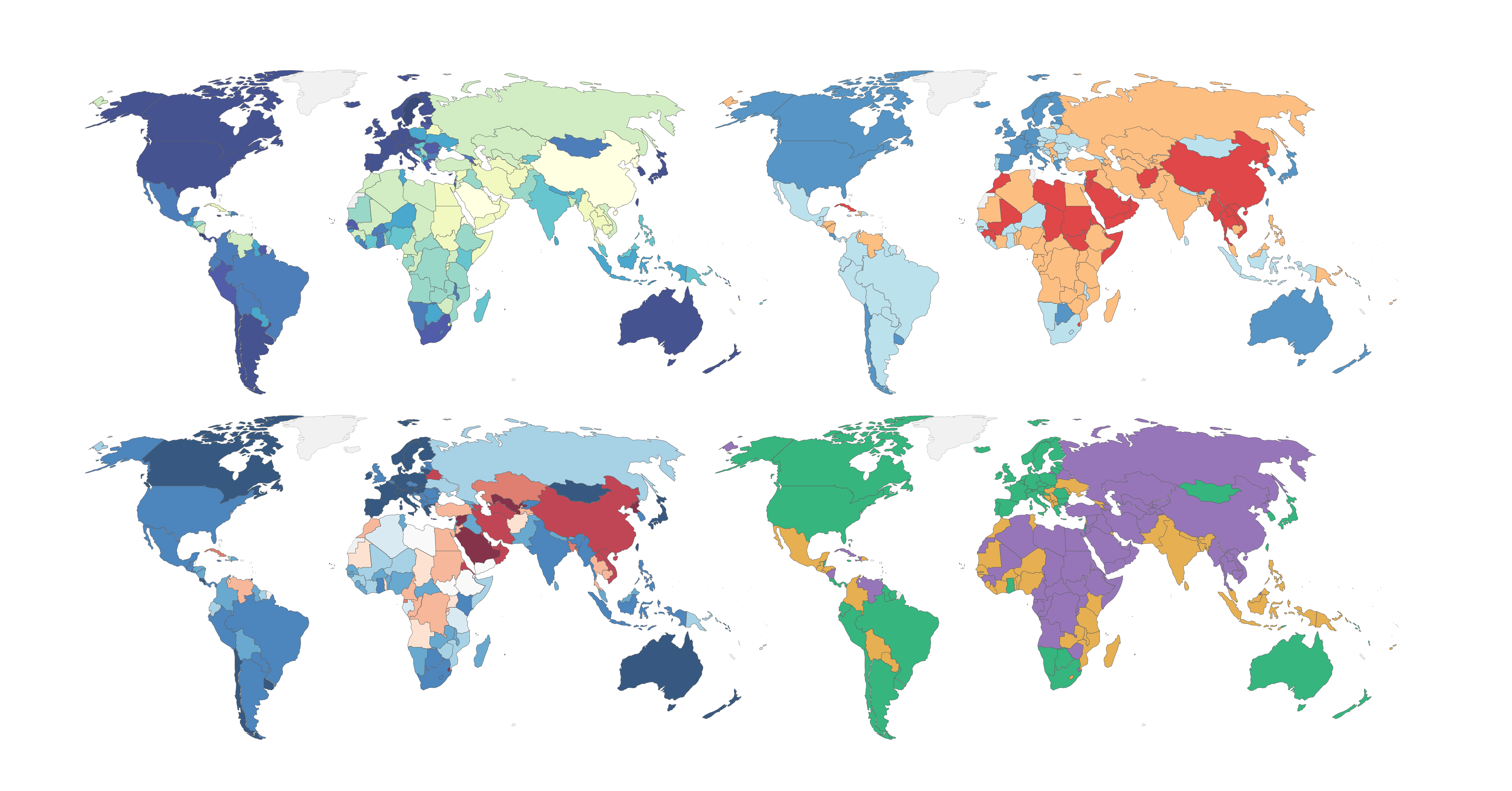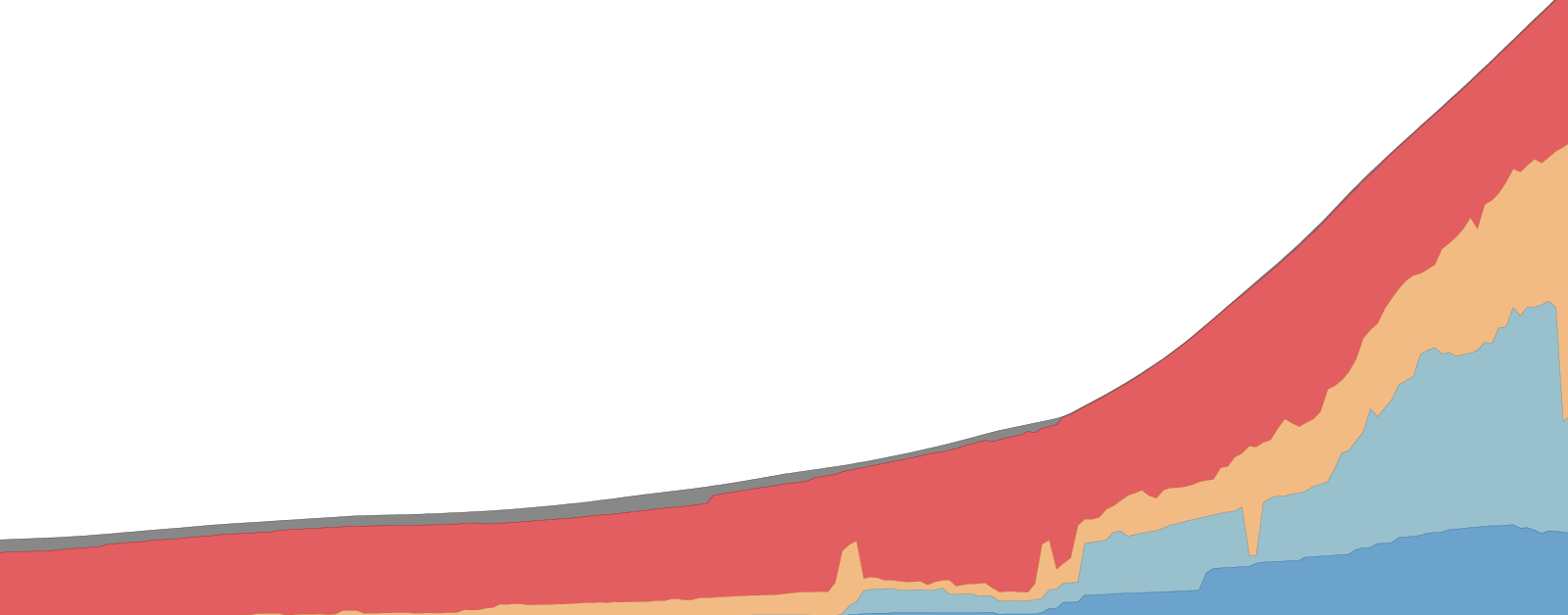Political regime

What you should know about this indicator
Related research and writing
Frequently Asked Questions
How does RoW characterize democracy?
Regimes of the World distinguishes four types of political systems: closed autocracies, electoral autocracies, electoral democracies, and liberal democracies.
How is democracy scored?
Regimes of the World treats democracy as a binary, by classifying a country as either a democracy or not.
This scoring thereby differs from other approaches such as Varieties of Democracy’s electoral democracy index and other projects, which classify countries as a spectrum, with some being scored as more democratic than others.
What years and countries are covered?
As of version 13 of the dataset, V-Dem covers 202 countries, going back in time as far as 1789. Many countries have been covered since 1900, including before they became independent from their colonial powers.
RoW covers countries and years since 1900. But we expand the years and countries covered and refine the coding rules, as detailed below.
How is democracy measured?
How does RoW work to make its assessments valid?
To measure what it wants to capture, RoW uses data from the Varieties of Democracy project, which assesses the characteristics of democracy mostly through evaluations by experts.
Where can I learn more about how RoW produces its data?
V-Dem, which publishes the RoW data, releases its data publicly and makes it straightforward to download and use.
It publishes the overall scores, the underlying subindices, and several hundred specific questions by country-year, country-date, and coder.
V-Dem also releases descriptions of how RoW measures democracy, as well as the questions and coding procedures that guide the experts and researchers.
What are the data’s shortcomings?
There are shortcomings in the way Regimes of the World characterizes and measures democracy.
What are the data’s strengths?
Despite these shortcomings, the classification tells us a lot about how democratic the world was in the past and today.
What is our summary assessment?
Whether the Regimes of the World classification is a useful measure of democracy will depend on the questions we want to answer.
Sources and processing
This data is based on the following sources
How we process data at Our World in Data
All data and visualizations on Our World in Data rely on data sourced from one or several original data providers. Preparing this original data involves several processing steps. Depending on the data, this can include standardizing country names and world region definitions, converting units, calculating derived indicators such as per capita measures, as well as adding or adapting metadata such as the name or the description given to an indicator.
At the link below you can find a detailed description of the structure of our data pipeline, including links to all the code used to prepare data across Our World in Data.
Notes on our processing step for this indicator
Reuse this work
- All data produced by third-party providers and made available by Our World in Data are subject to the license terms from the original providers. Our work would not be possible without the data providers we rely on, so we ask you to always cite them appropriately (see below). This is crucial to allow data providers to continue doing their work, enhancing, maintaining and updating valuable data.
- All data, visualizations, and code produced by Our World in Data are completely open access under the Creative Commons BY license. You have the permission to use, distribute, and reproduce these in any medium, provided the source and authors are credited.
Citations
How to cite this page
To cite this page overall, including any descriptions, FAQs or explanations of the data authored by Our World in Data, please use the following citation:
How to cite this data
In-line citationIf you have limited space (e.g. in data visualizations), you can use this abbreviated in-line citation:
Full citation






